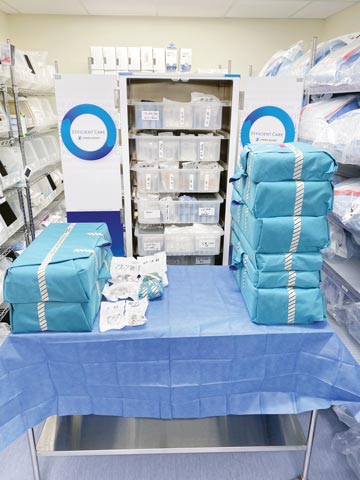Your certified sterile processing techs are the gatekeepers for the instruments that end up in your ORs. They compile trays and doublecheck sets to make sure instruments arrive on time and ready for use. There's perhaps no one in your facility who's more dialed into which tools are needed — and which aren't — for every case your surgeons perform. Tapping into their in-the-trenches insights will help you find cost-saving opportunities and improve your facility's bottom line.
Case in point: Certified sterile processing techs at my orthopedic surgery center worked with an instrument vendor to consolidate total knee instruments from 6 trays to 2 trays, which eliminated around 100 instruments and saved our facility $320 per case in reprocessing costs. Their efforts to consolidate instrument sets also:
- decreased sterilization cycle times by 30 minutes;
- prevented them from having to run 2 sterilizers (6 trays couldn't fit in a single load) to reprocess the instruments used during a single case;
- decreased the time it took them to apply blue wrap to sterilized instruments from 45 minutes to 15 minutes; and
- saved us $8.83 in the per-case costs of purchasing blue wrap, tray liners and chemical integrators.
Here's how to educate and empower your sterile processing techs to actively look for similar ways to reduce the amount of instrumentation that's used and subsequently reprocessed.
1Rightsize trays. When techs receive case carts in sterile processing, ask them to analyze the items surgeons did — and didn't — use to see if any "peel-packing" opportunities present themselves. It might be possible to create smaller custom peal-packed trays to avoid opening up a full instrument set from which only half the items are used.
This practice can also help your team better manage heavy workflow days. For example, on days when we were doing back-to-back shoulder cases, we'd run through a lot of instruments. Instead of buying additional instruments, several techs worked with our primary vendor, analyzed the flow and order of the cases, and came up with a solution: 2 additional consolidated shoulder trays (or mini-trays) made up of only high-use instruments that we could use to maintain the case flow without purchasing additional full trays. So, as our techs are processing a complete set of instruments from one case, they put a mini-tray into rotation for the next case to avoid downtime. Because of the techs' problem-solving, we're able to schedule back-to-back cases and keep the surgical schedule on track without having to purchase thousands of dollars in additional instruments.
.svg?sfvrsn=be606e78_3)

.svg?sfvrsn=56b2f850_5)